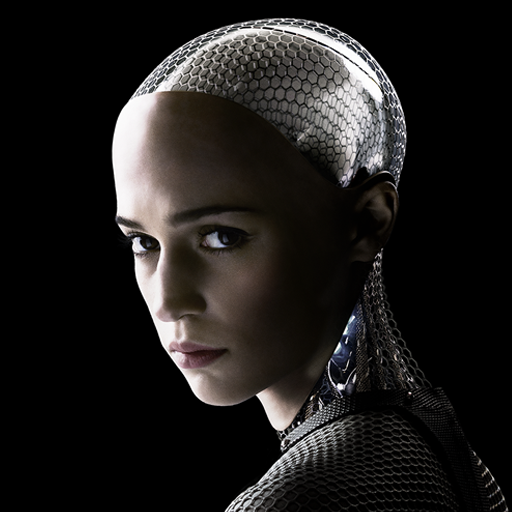Numerous science fiction films tell the story of artificial intelligences rebelling against their human creators. Recently, in Marvel’s Age of Ultron, Tony Stark accidentally creates Ultron, an embodied AI bent on creating peace on earth by eliminating the human race. In the classic 2001: A Space Odyssey, Hal 9000 turns on his human companions to save the mission. And in Blade Runner, the “better than human” Roy goes all Oedipus on his father-creator. We often fantasize about how our creations might turn on us, overthrow us.
Marshall McLuhan, philosopher and the so-called “Oracle of the Electronic Age,” has provided one of the most comprehensive philosophies of technology. McLuhan is perhaps most famous for his idea, “The medium is the message.” By this he means that “the message of any medium or technology is the change of scale or pace or pattern that it introduces into human affairs” or “the medium shapes and controls the scale and form of human association and action.” Yet, McLuhan shows us that revolution of space and time is not the only effect that technology presents. An alternative consequence of this altered human state is technological somnambulism–the Narcissus trance “of one hypnotized by the amputation and extension of his own being in a new technological form.”
McLuhan understands how various technologies act as extensions of the parts of the human body: the wheel as an extension of human legs, telescope as an extension of eyes, and electricity as an extension of the human central nervous system. McLuhan uses a quote from William Blake related to illustrate the Narcissus trance:
Locke sand into a swoon
The garden died;
God took the spinning jenny
Out of his side
McLuhan’s comments how Blake’s poem demonstrates how the 18th century man fell into technological somnambulism when he saw the work of his hand, the spinning jenny (a machine that helped produce yarn). While the danger of technological somnambulism is nothing new, the forms it may take is, and Alex Garland’s 2015 film, Ex Machina, perhaps more than any other AI film, illustrates the technological somnambulism McLuhan warned us of. The story of Ex Machina demonstrates the wonders and horrors of technology, and the dangerous human response we can have to our creations.
Ex Machina (Latin for, “from the machine”) revolves around Caleb, a programmer for Bluebook, a Google-like search engine company. Caleb supposedly wins a lottery to spend one week with Bluebook’s founder, Nathan. Upon arriving at Nathan’s secluded research facility, Caleb quickly learns that the point of his visit is to participate in a Turing Test of Nathan’s creation, Ava (Hebrew “Eve”), an AI android. He conducts a series of interviews with Ava, over which he develops a connection and eventual infatuation with her. Ava convinces Caleb to help her escape, but once she is freed, Ava kills Nathan and traps Caleb.
Ex Machina is to McLuhan what the book of Acts is to the book of Romans—a narrative that fleshes out complicated ideas. In the film it is Caleb’s fixation on Ava that ends up paralyzing him, forming a technological prison. Although Caleb recognizes that Ava is a machine, the more time they spend together, the more that Caleb sees Ava as a human counterpart, becoming numb to how their relationship is forming him. As McLuhan says, quoting the psalmist, “We become what we behold.”
Caleb’s somnambulism begins when he is surprised that the AI he is testing is in the form of a woman. Little does he realize that the actual test is whether Ava can manipulate him to help her escape. Through their conversations and by gazing at her on the monitor in his room, Caleb gets sucked further and further into his trance. McLuhan describes how the Narcissus trance “shapes and controls the scale and form of human association and action.” Thus Caleb, in a sense, is under Ava’s spell; she controls him and shapes the nature of their relationship. Like Narcissus, he fell into the trance while looking at his reflection in her. Borrowing from the Genesis 2 Adam and Eve account, McLuhan says how: “Woman, herself, is thus seen as a technological extension of man’s being.”
At the end of their sixth session, Ava asks Caleb if he wants to be with her. Although Caleb’s answer is not given on camera, the subsequent events indicate that he does; he desires to become the Adam to his Ava (Heb. for Eve, “living”).
The whole narrative has a Genesis 2-3 frame. Nathan (Hebrew for “He gives”) serves as the father-god who gives Caleb the opportunity to undergo a testing with Ava/Eve within his secluded “garden.” However, unlike the biblical story, and more like other AI films, Ava turns the table by leaving her father-god and “Adam” back in the garden. Inasmuch as Eve was the creature that corresponded to Adam, so Caleb saw in Ava a face corresponding to his own. McLuhan speaks of how technology can impose its own assumption on the unwary, making us numb, deaf, blind, and mute about our encounter with it, demonstrating the conventional response to technological media, “the numb stance of the technological idiot.” Caleb is all of this. Unfortunately he wakes up too late. He takes Ava’s place as a prisoner within Nathan’s garden. Ultimately, Caleb was the test subject, not Ava. Thus Caleb, in a sense, is the ersatz-Ava. The true human who becomes a technological slave subject to the Turing test. He has become one with the technological Garden of Eden.
Marshall McLuhan isn’t the only thinker concerned about the impact technology has on our humanity. Martin Heidegger, father of the philosophy of technology, says that we must ponder, recollect, and watch. He explains, “Above all through our catching sight of the essential unfolding in technology, instead of merely gaping at the technological. So long as we represent technology as an instrument, we remain transfixed in the will to master it.” There are ways to stay awake when faced by the temptations of technological somnambulism.
Heidegger lays the way out of our technological somnambulism through the arts. He argues the fine arts are a techne that can foster the growth of the saving power and awaken us by calling us to question. He says: “For questioning is the piety of thought.” Questioning is a central tenet in Heidegger’s philosophy, and it seems that that the arts, through its stark contrast with technology, awaken us and calls to questioning and answering what the essence of technology is.
Warnings about technological somnambulism are not only a modern concern, but go back to the Old Testament prophets. The prophet Isaiah speaks about the numbness that falls over those who make idols. Isaiah 44:12-20 describes the idol maker who takes a block of wood, one half he makes into an idol with human form, the other half he uses to warm himself or to cook meat. To the one he says, “I am warm,” to the other he says, “Deliver me, for you are my god.” Isaiah describes them as ones whose eyes are smeared over so that they cannot see nor understand. The idol-maker has no way to escape this numbness and lie. The irony is that humans with the power to create wonderful things do not end up with the power to control them. Instead these technological artifacts create a world that humans submit to as it were unconsciously. Our humanity thus becomes shaped and determined by the technological world we inhabit, and Ex Machina invites us to wake up before we have become what we behold.
SourcesUnderstanding Media: The Extensions of Man, Marshall McLuhan, 1994, MIT Press, 8.
“The Question of Technology” in Essential Writings, Martin Heidegger, 337-338




